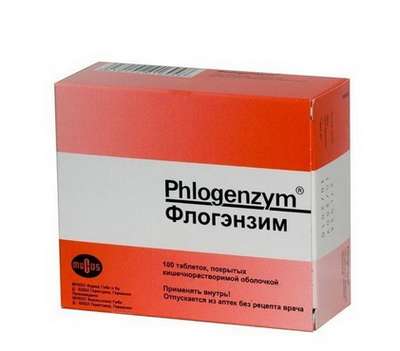Instruction for use: Pipotiazine
I want this, give me price
The Latin name of the substance Pipotiazine
Pipothiazinum (genus. Pipothiazini)
Chemical name
10- [3- [4- (2-Hydroxyethyl) -1-piperidinyl] propyl] -N, N-dimethyl-10H-phenothiazine-2-sulfonamide (and as palmitate or undecylenate)
Gross formula
C24H33N3O3S2
Pharmacological group:
Neuroleptics
The nosological classification (ICD-10)
F20 Schizophrenia: Schizophrenic conditions; Exacerbation of schizophrenia; Schizophrenia; Chronic schizophrenia; Dementia praecox; Bleuler's disease; Psychotic discordant; Dementia early; The febrile form of schizophrenia; Chronic schizophrenic disorder; Psychosis of the schizophrenic type; Acute form of schizophrenia; Acute schizophrenic disorder; Cerebral Organic Insufficiency in Schizophrenia; Acute attack of schizophrenia; Schizophrenic psychosis; Acute schizophrenia; Sluggish schizophrenia; Sluggish schizophrenia with apathoabulic disorders; Acute stage of schizophrenia with excitation
F20.0 Paranoid schizophrenia: The paranoid form of schizophrenia
F20.1 Gebefrenic schizophrenia: Gebefrenia; Gebefrenic syndrome; Heboid states;Gebefrenic schizophrenia
F22.0 Delusional Disorder: Delirium; Acute paranoid state; Othello Syndrome; Paranoid-hallucinatory state; Paranoid state; Paranoid delirium; paranoid psychosis; Paranoid delirium; Attack of delirium; The attack of polymorphic delirium; Psychotic disorder with a predominance of hallucinatory-paranoid symptoms and disorders of thinking; Anxious-delirious component; Anxiety and Paranoid Syndrome
F29 Inorganic psychosis, unspecified: Childhood psychoses; Psychomotor agitation in psychoses; Hallucinatory-delusional disorders; Hallucinatory-delusional syndrome; Intoxication psychosis; Manic-delusional disorders; Manic chronic psychosis; Manic psychosis; Acute psychosis; paranoid psychosis; Paranoid psychosis; Subacute psychosis; Presenile psychosis; Psychosis; Intoxication psychosis; Psychosis is paranoid; Psychosis in children; Reactive psychosis; Chronic psychosis; Chronic hallucinatory psychosis; Chronic psychosis; Chronic psychotic disorder; Schizophrenic psychosis
F39 Mood disturbance [affective], unspecified: Affective disorder; Affective disorders; Dysphoric states; Dysphoric disorder; Psychoemotional Disorder; Affective disorders; Emotional-labile disorder; Cyclotimic personality
R44.3 Hallucinations, unspecified: Hallucinatory conditions; Hallucinations; Acute hallucinatory state; Chronic hallucinatory conditions
R45.1 Anxiety and agitation: Agitation; Anxiety; Explosive excitability; Internal stimulation; Excitability; Excitation; Excitation acute; Psychomotor agitation; Hyperexcitability; Motor excitement; Cessation of psychomotor agitation; Nervous excitement; Restlessness; Night trouble; Acute stage of schizophrenia with excitation; Acute mental agitation; Paroxysm of excitation; Overexcitation; Increased excitability; Increased nervous excitability; Increased emotional and cardiac excitability; Increased agitation; Mental arousal; Psychomotor agitation; Psychomotor agitation in psychoses; Psychomotor agitation of an epileptic nature; Psychomotor paroxysm; Psychomotor fit; Symptoms of excitation; Symptoms of psychomotor agitation; The state of agitation; A state of anxiety; Excitation status; A state of heightened concern; The state of psychomotor agitation; Conditions of anxiety; Excitation conditions; The state of excitement in somatic diseases; Excitation level; Feelings of anxiety; Emotional arousal
CAS Code
39860-99-6
Characteristics of the substance Pipotiazine
Piperidine derivative of phenothiazine.
Pharmacology
Pharmacological action - antipsychotic, neuroleptic.
It blocks central dopamine receptors, inhibits synaptic transmission in the brain. Reduces psychotic symptoms, fear, aggressiveness, depersonalization, psychomotor agitation and inhibition. Has a strong extrapyramidal effect, weak - antiemetic, anticholinergic, sedative, hypotensive. Particularly effective in the paranoid form of schizophrenia, chronic psychoses with hallucinations, chronic delirium, as well as manic attacks, excitation conditions.
After oral intake quickly absorbed from the gastrointestinal tract, Cmax is achieved after 1-2 hours. Bioavailability is about 40%. Half-distribution period is 6-8 hours, T1 / 2 is 4-5 days. It is excreted mainly through the intestine, with the participation of bile excretion, and the kidneys (5-10%).
Pharmaceutical form - a solution of pipotiazine palmitate in oil, provides a gradual release of the active substance during the hydrolysis of palmitate at the injection site. Antipsychotic effect usually begins to develop during the first 48-72 hours after administration and becomes pronounced within 1 week.
Application of substance Pipotiazine
Chronic psychosis, incl. deficient or paranoid forms of schizophrenia, hebephrenia, chronic hallucinatory and affective-delirious states. Acute psychosis and exacerbation of chronic psychoses - manic attacks, attacks of delirium of various genesis, arousal.
Contraindications
Hypersensitivity, toxic agranulocytosis in history, angle-closure glaucoma, porphyria, prostate diseases.
Restrictions on the use
Cardiovascular diseases, renal and / or hepatic insufficiency, Parkinson's disease, epilepsy, advanced age, pregnancy, breast-feeding.
Side effects of the substance Pipotiazine
From the nervous system and sensory organs: depression, early dyskinesia (spasmodic torticollis, oculomotor crisis, trism), extrapyramidal disorders, tardive dyskinesia, excessive sedation.
From the cardiovascular system and blood (hematopoiesis, hemostasis): orthostatic hypotension, lowering blood pressure, agranulocytosis.
Other: cholestatic jaundice, amenorrhea, galactorrhea, gynecomastia, hyperprolactinaemia, weight gain, anticholinergic effects (dry mouth, constipation, accommodation pause, urinary retention), impotence, frigidity, allergic reactions, photosensitization.
Interaction
Narcotic analgesics, antitussives, some antihistamines, barbiturates, benzodiazepines and clonidine increase the inhibitory effect on the central nervous system. Antihypertensive drugs increase the risk of developing hypotension.
Overdose
Symptoms: Parkinsonism, coma.
Treatment: symptomatic.
Routes of administration
Inside, IM.
Precautions for the substance Pipotiazine
When hyperthermia appears, treatment is immediately stopped. Careful observation of patients suffering from epilepsy (possibly lowering the epileptogenic threshold) and Parkinson's disease is necessary. Extrapyramidal disorders and early dyskinesia may be weakened by taking anticholinergic antiparkinsonian drugs.
During the treatment, you can not drink alcoholic beverages.
During the treatment period, do not engage in potentially hazardous activities that require concentration and speed of psychomotor reactions (drowsiness and decreased reaction, especially at the beginning of treatment).
Special instructions
IM administration is allowed only after verifying the tolerability of pipothiazine when ingested. Do not enter IV.

 Cart
Cart





